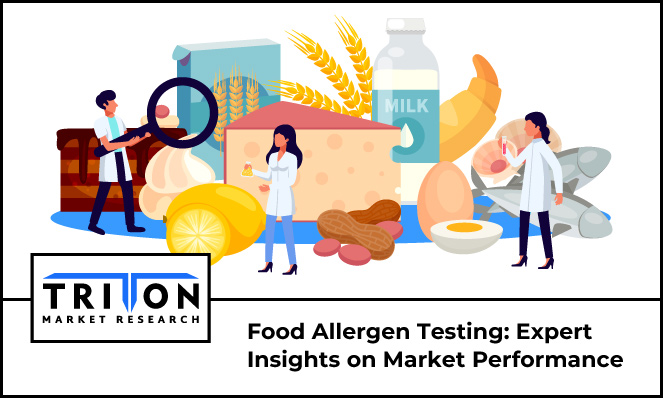



05, August 2022

The food production industry continues to be highly susceptible to food allergies, resulting in serious public health concerns worldwide. In contrast to other pathogens, allergenic proteins are persistent, heat resistant, and difficult to eradicate once they have entered the food supply chain. In this situation, allergen segregation and accurate food allergen labeling are emerging as the best strategies for managing them in the modern food production ecosystem.
The food allergen testing market is anticipated to surge at a CAGR of 7.01% during the forecasted period, 2022-2028. Factors supplementing this growth are continuously rising food production, government regulations and the increasing prevalence of food allergies. However, the absence of laws in developing nations is one of the reasons restricting the market’s expansion. Another challenge to the market is small-sized companies’ reluctance to comply with regulations to implement cost-cutting strategies. In addition, government bureaucracy, permissive attitudes, and corruption further hamper the studied market geographically.
The identification of food allergens and evaluating protein residues for food safety and labeling are crucial. These testing use the ELISA method, which identifies allergens in various foods, including meat, dairy, nuts, soybean, fruit juices, and others. In ELISA, color changes are produced to show the presence of a particular antigen using chromogenic reporters and substrates. The method also produces high sensitivity in applications, in some cases down to ppm, making it the widely used product for food allergen testing.
In addition, rapid growth in the food & beverages industry and increasing international trade of food and food ingredients provide opportunities to the key players operating in the market. The United States Food and Drug Administration (FDA) is one of ELISA's major proponents for food production allergen testing. Also, most companies like SGS SA, TUV SUD, 3M Company etc., are engaged in food allergen testing and have ELISA method-based products in their portfolio.
Technological advancement is another trend propelling the market’s advancement. PCR is expected to hold the fastest growth rate of 8.24% in the technology segment during the forecast period. It is used to identify antibodies in food that cause allergic reactions.
One of the factors that are pushing the popularity of the technology is its frequent use by companies like ALS Ltd. Also, it is widely utilized in bakery products due to its sensitivity and ease in detecting the allergens’ DNA molecules, thereby accelerating the market growth.
Another trending segment contributing to the market is the food testing segment. Among all, beverages is estimated to dominate the category during the forecast period. Some of the allergens found in the beverages are egg protein, gluten, grapes, histamines, hops, rye, and seafood proteins. The UK Food Safety Act compelled beverage makers to list all known allergens on the labels of their products. This resulted in the increased use of Liquid chromatography-mass spectrometry (LC-MS) testing, thus boosting the market growth.
The Asia-Pacific food allergen testing market is expected to witness the fastest growth at a 7.80% CAGR, with total revenue of $345.88 million by 2028. The market’s services are expanding in the region owing to the rising demand for food processing products. Biotech companies such as ALS Limited, Eurofins Scientific SE, Auriga Research and Intertek Group Plc are focusing on penetrating the untapped countries of the region, thereby propelling the regional market. Also, due to the growing awareness of food allergies and safety in Japan, South Korea, China, Singapore, Australia and New Zealand, consumers are pressurizing the government to implement regulations and norms.
The food allergen testing market is highly dynamic and intensely competitive. The leading players such as Eurofins Scientific SE, Microbac Laboratories, Romer Labs, and Tuv Sud are formulating strategic initiatives such as expansion and acquisition to sustain their position among the new entrants. Therefore, expanding business operations & service offerings and new product launches are some aftermaths of the growing rivalry.
Strategic actions of players to sustain the competition:The food allergen testing market by technology is divided into biosensors-based, immunoassay based/ELISA, PCR, and other technologies.
> Which is the largest region in the market?Europe leads the food allergen testing market with a CAGR of 7.15% during the forecast period.

Prevalent cases of terrorist attacks in today’s world is increasing the need for severe standards of security for public safety, and the global market for biometric technology scrupulously accommoda..
Prevalent cases of terrorist attacks in today’s world is increasing the need for..